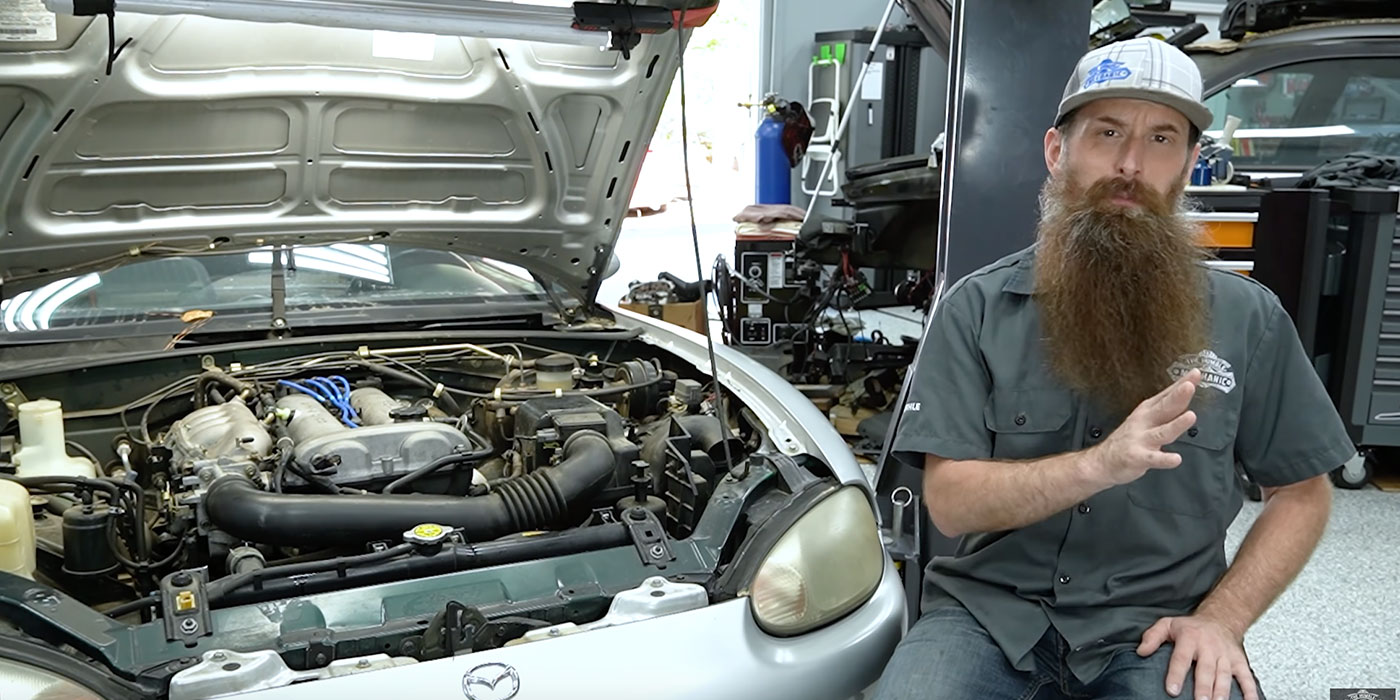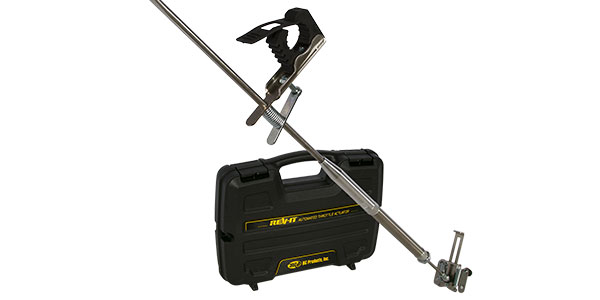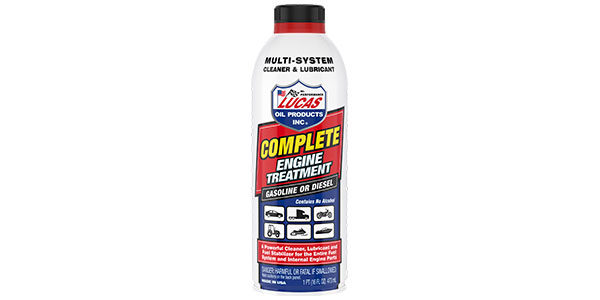Whether it is a fuel, air or oil filter, they are usually a simple component when you look at them. It’s usually a paper element folded into an accordion shape and wrapped around a frame to support it.
Regardless of the design, the idea remains the same. Dirt goes in, it doesn’t come out or get through. As long at it stops contaminates and allows whatever it is filtering, like air or fuel, to get through, it is doing a good job. Some people try to build a better mouse trap and a few succeed. Other people just try to build a cheaper mouse trap and it shows.
Why should you care if the filter is made a little cheaper than some others? After all, that oil filter only has to do its job for about 3,000 miles. If it passes a little extra dirt, the damage is likely too little to cause a problem that can be traced back to you…right? That cheap filter lowered your cost of goods and increased your net profit…right?
Here are some filter issues I’ve run across that might just change your attitude.
Air Filters
Newer vehicles can detect a bad filter, you just have to know the signals, like with this 2001 Mustang with a 3.8L. The vehicle came in with a check engine light on and a fault code P0172 (bank 1 rich condition) found in the memory. Looking at the fuel trims on the scan data found both banks running in the negatives. Bank one was slightly further than the other one. The PCM is definitely seeing a “rich” condition here and is trying to adjust it out. It is compensating for it well. The Short Term Fuel Trim (STFT) is running around zero and the engine runs good. However, something is definitely not right.
If you had a subscription to the Motorcraft website, you could search Special Service Messages (SSMs), since there is no TSB on this, you can dig up an SSM for this vehicle instructing you to inspect the inlet screen of the mass air flow sensor for being damaged or missing. The screens are known for getting damaged by fingers of the person replacing the air filter. This problem is also common to the Windstar.
Naturally, the first thing to get inspected was the inlet screen. The inlet screen was not damaged, but something else was noticed. The air filter in this vehicle was very different from OE design. Most notably, the nose cone was very wide by comparison to OE.
An OE filter was installed as a test. The Keep Alive Memory (KAM) was not cleared. Immediately, the STFT started correcting and counteracted the Long Term Fuel Trim (LTFT) beautifully. When you add the LTFT and the STFT together of each bank, you can see that there is a very happy zero percent fuel trim here.
Clearing the KAM made the PCM very happy. So what went wrong? The MAF was over reporting air flow. This happened, not because of a bad MAF sensor, but because it was exposed to turbulence in the stream of air flowing through it. The odd shape of the air filter caused this. The filter that caused the problem is shown below. It was in great shape as far as not having any damage. It’s just that it didn’t get along with the Mass Air Flow (MAF) sensor on this vehicle. This was not an isolated incident.
In the months following this, several more Mustangs and Windstars came in with similar filters and problems.
An even more disturbing problem with these cheap filters was that the plastic nose cones that are glued to the paper element fell off. They would come unglued and leave nothing but an open end through which dirty air could bypass the element. This would set codes for running too rich. At least the MAF had a screen that might stop rocks and large bugs that could lock the throttle plate open.
I recently got a reminder of this issue when a 2006 Ford E150 came into the shop setting P0172 and P0175. If you were to do a TSB search, you’ll find that there is a reflash to fix this problem. However, the problem wasn’t caused by software programming. It was caused by a similar problem as the Mustang I just mentioned. You can see in the picture below how much smaller the cheap replacement air filter base gasket is than the OE filter.
The cone is also slightly different and may or may not have been a factor. The problem here was definitely at least two part. For one, the base gasket of the filter did not seal inside the two-piece housing as seen below.
The other problem was that the two-piece housing was not properly latched. This could have caused a problem even with the OE filter. Try it and see what I mean. The next time an Econoline van comes into your shop (engine size is not important), unlatch the air cleaner halves and spread them apart a little at idle. Listen closely to the engine as it idles. Listen to the rhythm of the engine. As you spread the housing apart, listen to the instant change. You’ll hear it stumble. You’ll also notice a popping sound that resembles intake valve leakage noise that is actually coming from the IAC valve rapidly changing as the PCM tries to smooth the idle out. That same issue is prevalent on the Freestar and Five Hundred. It is common for the lower hinge portion of the air cleaner housing to not be properly seated causing an air gap at the bottom. The customer will then complain about a “popping” sound at idle from the driver’s fender area and rough idle. Tauruses also had an SSM for a similar issue. If a technician did not properly latch the lower portion of the air cleaner housing, rich codes and rough idle would occur when the fans came on at idle due to the air turbulence in the MAF sensor.
MAF sensitivity to air turbulence is well documented. The shape of the air filter works with the shape of the air cleaner housing to smoothly direct air flow through the MAF. If either of those differ in shape too greatly from OE, problems will be experienced. Keep that in mind next time you are dealing with rich or lean codes and/or rough idling on a MAF vehicle that has one of those “high performance” air filters hanging out there in space without housing around it.
How about a nice fire hazard for you? Did you know that Ford had a recall on the air filters for Tauruses around 2001? The recall was because the paper filter element would catch fire. Paper fibers would end up coming loose out of the element and collecting on the hot wire in the MAF sensor. Some unlucky ones caught fire.
Still think that bargain priced air filters are a good idea? I wonder if the manufacturer’s of the cheap air filters are aware of that issue and made sure their elements match the OE’s new design.
Oil Filters
On a couple of occasions, I’ve seen a rather ugly situation. It gets ugly because everyone points fingers at each other in a situation like this. Situation number one involved an Econoline van with a 5.4L two-valve engine. The technician was looking at it for a timing chain and lash adjuster rattle-type noise. It was loud and sounded like it was coming from more than one thing in the engine. The kicker was it had normal oil pressure readings.
The vehicle was still under warranty so the technician started tearing it down to find out what was wrong. He pulled it down to the timing chains and didn’t see anything wrong. After all that, he decided to call a hotline. The hotline tech asked “does it have an ‘off-brand’ oil filter?” Yes it did, but the technician didn’t think much of it. There is nothing unusual about that.
The hotline tech then told him to remove the cam caps and look for something they’ve seen a few times before. What was found was what appeared to be a piece of filter element paper in an oil passage. Now you are faced with an engine that is torn down that is suddenly not a warrantable problem.
A few months later, another E150 with a 5.4L two-valve engine comes in. The same tech got it. It too sounded like timing chain and lash adjuster noise with good oil pressure. Sensing that he had been through all this once before, he looked at the filter and oil change sticker to find that it had just left a shop within the last 100 miles where it got an oil change.
We found a piece of cellophane. The best that we could determine was the oil filter must have come wrapped in plastic that had to be removed. The installing tech must have punched the plastic with a pen of screw driver where it passes over the threaded hole. A piece of plastic wrap must have come free and dropped down into the filter. That piece worked its way to an oil passage shortly afterward.
If you were to start searching for TSBs of various makes, you will likely find many manufacturers have TSBs concerning the oil filter type on their engines and sighting them as a possible source of a problem. Ford mentions the oil filter brand and type issue in a TSB about VCT (variable valve control actuated by oil pressure) concerning issues on Focus and Contour models.
Fuel Filters
Fuel filters are often overlooked and misunderstood when it comes to driveability problems. With modern fuel systems using less pressure and pressure regulators in the tank, the slightest restriction in the filter can cause a trouble code to come on.
Another issue that I ran across was a diagnostic story shared on D-tips.com concerned installation issues. The problem vehicle as a BMW that would randomly lose power. The engine would lean out and current draw on the fuel pump would sharply increase. The technician found something he didn’t expect. He found that the fuel filter had been installed backwards at some undetermined time in the past. He pulled the filter off to find it had a dull rattle inside of it. The filter’s paper element had torn loose. He opened the filter to have a peak inside.
The element inside the filter had torn loose and since the filter was on backwards, the solid plated end of the filter’s pleats would block off the outlet to the engine. Its hard to say if filter quality played a roll in this. On one hand, would a higher quality filter stayed glued better? Or, would a top quality filter still come loose inside since the flow was pulling the filter element free from the casing as it ran?
One thing you should be aware of is that more than one vehicle manufacturer has had problems with their the OE, OES and aftermarket filters, and they have been documented and the information distributed. Being aware that this information is out there critical because these simple service items can cause diagnostic nightmares if not fully understood.
This is not a question of the source of the filter, but the quality. It is up to the technician installing the filter to look at the following items:
Shape: Being the wrong shape can influence sensor readings.
Weak Construction: Air, oil and fuel filters are under pressure. Any unnecessary deflection can cause unfiltered fluids and gases to enter the engine.
Incorrect gaskets and sealing materials: Gaskets and sealing surfaces must be able to maintain a seal for the entire life of the filter. If the materials harden and break, they can be ingested into the oil systems or air intake.
Wrong Filter Media: If the filter media is too restrictive, it will cause the filter to be crushed under pressure. Not all filters are paper (cellulous). Some
filters use synthetic materials that are engineered to have correct efficiency and pressure differential. Be sure to choose your filter supplier based on quality and not low price. If you saved a dollar on every low quality oil filter that you purchased, it would take between 4,000 to 6,000 bargain filter purchases to save enough money to buy one typical engine. That would also mean you have four to six thousand of those time bombs running around out there. Personally, I don’t like that math.







